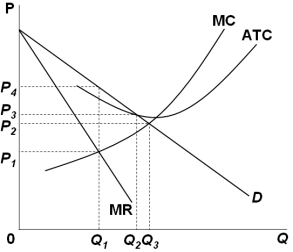
6.2 Production in the short-runįrom: Openstax Principles of Microeconomics (Chapter 7.2) That does not mean he would not want to open his own business, but it does mean he would be earning $10,000 less than if he worked for the corporate firm. Therefore, his economic profit, which is revenue minus explicit cost minus implicit cost, isĮconomic Profit = $200,000 – $85,000 – $125,000 = -$10,000.įred would be losing $10,000 per year. In this example, the implicit cost is $125,000, which is the salary he is giving up to start the firm. Instead, he is giving up the ability to earn his salary. This is where implicit costs come in to play. However, we are ignoring the fact that Fred has to leave his job to start his own firm. Therefore, his accounting profit, which is revenue minus explicit cost, isĪccounting Profit = $200,000 – $85,000 = $115,000. This means that the total explicit cost is $85,000. In this example, Frank is spending $50,000 per year on rent and $35,000 on a law clerk. Next, let us calculate the explicit costs. Fred will earn $200,000 worth of revenue (as stated in the problem.) If these figures are accurate, would Fred’s legal practice be profitable?įirst, let us calculate revenue. He could hire a law clerk for $35,000 per year. He has found the perfect office, which rents for $50,000 per year. To run his own firm, he would need an office and a law clerk. He is considering opening his own legal practice, where he expects to earn $200,000 per year once he establishes himself.

Fred currently works for a corporate law firm where he earns $125,000 per year. The difference is important because even though a business pays income taxes based on its accounting profit, whether or not it is economically successful depends on its economic profit. Economic profit is total revenue minus total cost, including both explicit and implicit costs. It means total revenue minus explicit costs-the difference between dollars brought in and dollars paid out. These two definitions of cost are important for distinguishing between two conceptions of profit, accounting profit, and economic profit. Implicit costs also include the depreciation of goods, materials, and equipment that are necessary for a company to operate. For example, working in the business while not earning a formal salary, or using the ground floor of a home as a retail store are both implicit costs.

Often for small businesses, they are resources that the owners contribute. They represent the opportunity cost of using resources that the firm already owns. Implicit costs are more subtle, but just as important. Wages that a firm pays its employees or rent that a firm pays for its office are explicit costs. Explicit costs are out-of-pocket costs, that is, actual payments. We can distinguish between two types of cost: explicit and implicit. We will learn in this chapter that short run costs are different from long run costs. The sum of all those costs is total cost.

Each of those inputs has a cost to the firm. Recall that production involves the firm converting inputs to outputs. Total cost is what the firm pays for producing and selling its products. We will see in the following chapters that revenue is a function of the demand for the firm’s products. We calculate it by multiplying the price of the product times the quantity of output sold: Total revenue is the income the firm generates from selling its products. 6 Costs and Production 6.1 Explicit and implicit costs, and accounting and economic profitsįrom: Openstax Principles of Microeconomics (Chapter 7.1)Įach business, regardless of size or complexity, tries to earn a profit:


 0 kommentar(er)
0 kommentar(er)
